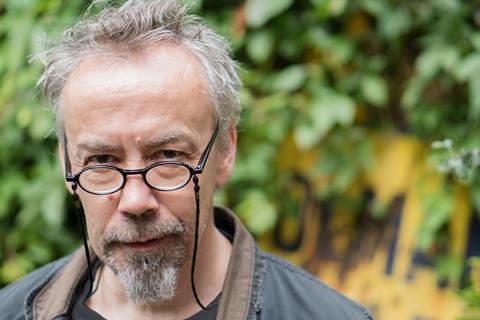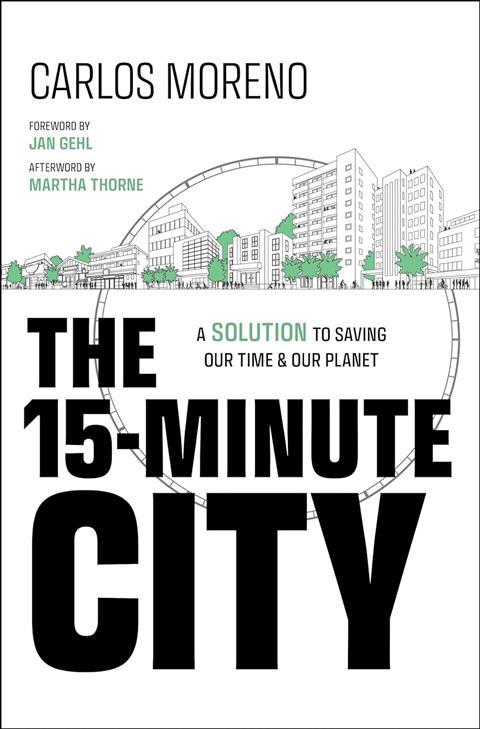Carlos Moreno champions the 15-Minute City as a revolutionary approach to urban living, but is it truly innovative or simply a repackaging of familiar ideas, asks David Rudlin

There is a structure to many urban design books. They start with a time when cities were good, compact walkable places. This is followed by a tale of woe as the good city is destroyed by various villains: the planners, the motorcar, suburbanisation, modern architecture etc… Then the author sets out their vision for the reform.
The first part of Carlos Moreno’s book The 15-Minute City follows a similar arc. In Moreno’s case the villain is Le Corbusier with his plans the Ville Radieuse with its uses separated into towers and linked by freeways. The central message of the 15 Minute City is that we need to reverse this trend and focus the activities of daily life in neighbourhoods where they can be reached by foot, thereby saving the planet and allowing us to live better lives.
Moreno quotes Torsten Hagerstrand’s 1970 book the Geography of Time in which he explores the way that people move through space and time in traditional and modern communities. He bemoans the fact that our time has been appropriated by industrial societies with set working hours. The modern city creates frenetic lifestyles with too long spent travelling and not enough time for ourselves and our family.
Moreno proposes a revolution: “the creation of a city of proximity, a city where everything we need is available at short distances, everywhere within 15 minutes of our home”.
He tells of how he started as an academic studying complex systems initially in industry before applying the thinking to digital cities. This led to an involvement in the C20 and later the C40 movement, a global network of cites seeking to address climate change. He became disillusioned with the notion of digital cities focussing instead on the social, cultural and environmental dimensions that would become the 15 Minute City.

A key moment was the 2015 COP21 Climate conference in Paris. The New York mayor, Michael Bloomberg, and the Paris mayor, Anne Hidalgo, convened a meeting of 1,000 mayors from around the world that drew up a declaration that was endorsed by the full conference. This set out a roadmap for the transformation of cities to address the climate crisis and was the prototype of the 15 Minute City.
The second half of the book documents how this roadmap has been put into practice, first in Paris and then Milan, Portland and Cleveland in the US, Buenos Aires, Sousse, Melbourne and Busan, ending with the Scottish Government’s adoption of the 20 Minute City following COP26 in Glasgow. In most cases the impetus was the COVID pandemic and the ways that home working, social distancing and temporary active travel measures caused people to think differently about their cities.
Moreno talks about how the pandemic showed us an alternative to the “Urban life that has become a frenetic race where we constantly seek to fill the void with ephemeral and superficial experiences”. Moreno’s notion is that we should slow down, travel less, spend more time with our families, and live and work within neighbourhoods that are able to meet most of our day-to-day needs.
It makes sense if you are based in one of Paris or Milan’s older diverse neighbourhoods. Whether it makes sense to those of us, especially the young, who quite like the frenetic city, is another question. Whether it can be applied to other areas, such as the banlieue in Paris or a low density single-use suburb, is another.
The book is full of statements like “how I arrived at the formulation of this new global approach”. But for all of this bluster (I think this is partly lost in translation between French and English) the proposals that are described in the later chapters are the sort of things that urban designers have been promoting for years: A mix of uses, walkable neighbourhoods, local shops and services, active travel, public transport and sustainability measures.
So the 15 Minute City is at once radical and at the same time reminiscent of the sort of policies that were, for example, set out by Richard Rogers in the Urban Task Force Report 25 years ago. What is striking is the way that the idea of the 15 Minute City has caught on both with supporters and critics. It has been adopted as a slogan by cities across the world without always an understanding of what it means. It has also been adopted by the lunatic fringe as “15 minute prison cities”, although, apart from an oblique reference to “dishonest attacks” in the introduction, Moreno doesn’t mention the hate campaign he has endured.
If you can get over the personal aggrandisement and the tendency towards man-splaining (mentioning gentrification, there is no need to explain the origins in the English gentry) there are a lot of good ideas in this book and, as with Jane Jacobs, very little with which I would disagree. But whether there is anything new, I’m not so sure.
>> Also read: Oxford’s 15-minute city debate risks turning into a ‘gridlock of stupid’
Postscript
The 15-Minute City by Carlos Moreno, is published by Wiley.
David Rudlin is director of Urban Design at BDP and visiting professor at Manchester School of Architecture.
He is a co-author of High Street: How our town centres can bounce back from the retail crisis, published by RIBA Publishing.
















2 Readers' comments